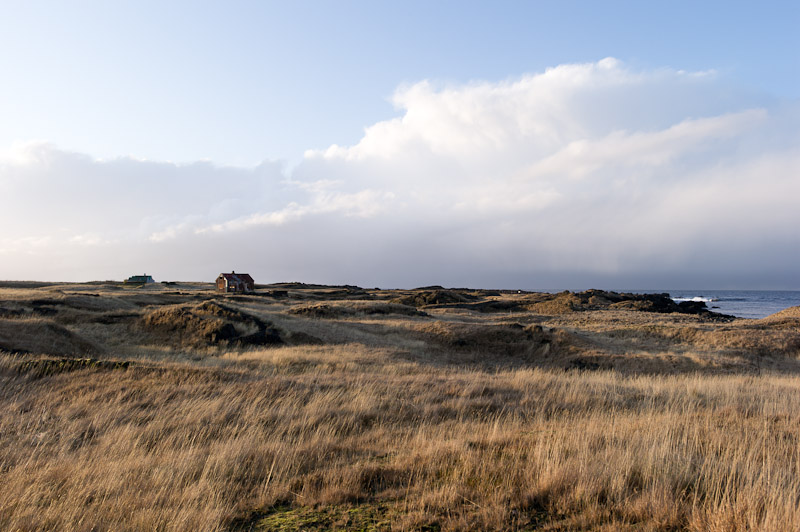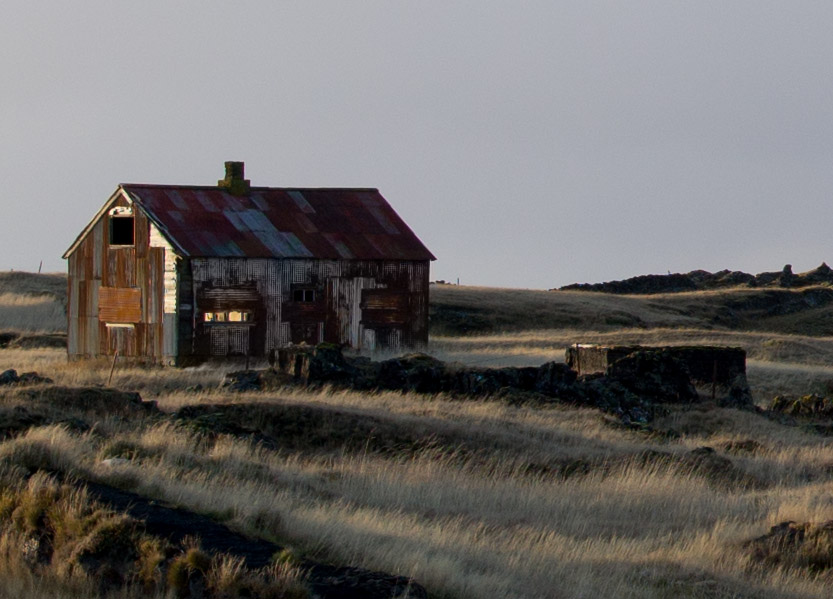- November 14, 2011 at 9:11 am #1473
So, one of the great things about the S2 is that the lenses are so incredibly good that they outresolve the sensor in most situations. The downside to this situation is that since there is no AA filter, you can experience moire if you have fine detail. I have been experiencing it on a fairly regular basis. I experienced it with the M9 as well, but not so often as to make it a problem. On the S2 it looks like something I am going to have to learn to work with more regularly.
For those of you who correct moire, what is the best method to do so? I am guessing it is primarily localized desaturation, but this is not always possible. Nevertheless, if there are good ways to do it (via brushes etc), I would be interested to hear them. Unfortunately, it is not just the color moire that can be a problem. I am also getting patterning on occasion. I am not sure what to call it, but I can attach an example.
In the photo below, there is a landscape shot with a corrugated steel house in the background. This is actually one of the most common building materials here, so I run into this a lot. The shot was taken with the 35mm lens at f/6.8. The paneling should be just simple straight lines, but in the crop it is obvious there are color aberrations and even horizontal lines where there should only be vertical. Obviously the bayer algorithm is failing here, the question is, what, if anything can be done about it? Similar shots taken with a softer lens (80mm f/2.8 CFE Hasselblad) did not show the problem, but they were not of the exact same focal length, so it is not clear that is the issue. However, both Leica lenses (35 and 120) showed fairly strong moire in the images, just in different places. I don’t blame the lenses, it just means they are great! The only question is how to tame the resolution when it is too much for the image. I should also stress that these issues are only visible on very high magnification, so it would not be an issue for most print sizes. But printing at full resolution, they would be clearly visible. For the record, there are 100% and 400% crops. Clearly, 400% is not something I would use, it is just to demonstrate the problem more clearly.
- November 14, 2011 at 11:57 am #1477David FarkasNewbie
 Hollywood, FLJoin Date: Aug 2014Posts: 414Currently using:
Hollywood, FLJoin Date: Aug 2014Posts: 414Currently using:
Leica M, Leica S, Leica SL, Leica CLOffline
Stuart Richardson;1282 wrote: So, one of the great things about the S2 is that the lenses are so incredibly good that they outresolve the sensor in most situations. The downside to this situation is that since there is no AA filter, you can experience moire if you have fine detail. I have been experiencing it on a fairly regular basis. I experienced it with the M9 as well, but not so often as to make it a problem. On the S2 it looks like something I am going to have to learn to work with more regularly.
For those of you who correct moire, what is the best method to do so? I am guessing it is primarily localized desaturation, but this is not always possible. Nevertheless, if there are good ways to do it (via brushes etc), I would be interested to hear them. Unfortunately, it is not just the color moire that can be a problem. I am also getting patterning on occasion. I am not sure what to call it, but I can attach an example.
In the photo below, there is a landscape shot with a corrugated steel house in the background. This is actually one of the most common building materials here, so I run into this a lot. The shot was taken with the 35mm lens at f/6.8. The paneling should be just simple straight lines, but in the crop it is obvious there are color aberrations and even horizontal lines where there should only be vertical. Obviously the bayer algorithm is failing here, the question is, what, if anything can be done about it? Similar shots taken with a softer lens (80mm f/2.8 CFE Hasselblad) did not show the problem, but they were not of the exact same focal length, so it is not clear that is the issue. However, both Leica lenses (35 and 120) showed fairly strong moire in the images, just in different places. I don’t blame the lenses, it just means they are great! The only question is how to tame the resolution when it is too much for the image. I should also stress that these issues are only visible on very high magnification, so it would not be an issue for most print sizes. But printing at full resolution, they would be clearly visible. For the record, there are 100% and 400% crops. Clearly, 400% is not something I would use, it is just to demonstrate the problem more clearly.Stuart,
At least with a shot like this, you might want to stop the lens down to f/11 or f/13 (good to carry more DOF anyway) and pull your focus just a little closer. I typically never shoot my 35 at infinity for landscape shots, as I am usually trying to carry DOF over as much of the frame as possible. The side effect should be that your moire disappears. The focus point will have moved just forward and DOF will still give a sharp result, but you shouldn’t have the sampling artifacts.
David Farkas
Red Dot Forum
Leica Store Miami - November 14, 2011 at 2:58 pm #1482Jack MacDEstablished Member
 USA, St. Louis, MO and Phoenix, AZJoin Date: Jun 2011Posts: 367Currently using:
USA, St. Louis, MO and Phoenix, AZJoin Date: Jun 2011Posts: 367Currently using:
Leica M, Leica S, Leica CLOffline
David, as usual, has the fix suggestion for when you are taking the photo.
If you want to try and fix this after the fact in Light Room, you can do a local brush that is set to reduce clarity and or sharpness just a bit. Just apply it to the worst areas. It is pretty fast. Not perfect, but I would rather skip the AA filter to get the rest of the scene sharp and let this tiny area go a little soft.
Others may solve it in other ways.
Jack - November 23, 2011 at 12:55 am #1546
Thank you both for the help. I am sorry I did not reply sooner. I left town right after I posted the thread, and then forgot to come back to it.
David — I will consider doing that next time, though I still appreciate the ease of just focusing on that which I want in focus, and taking the shot. But in this case, it may indeed be better to trick the camera. I would rather some post-processing fix, however.
Jack — you make a good point, but in this case, I don´t think it works all that well. I will see if I can find any more information. I have a feeling that fixing this convincingly may require some rather complicated post-processing gymnastics. Luckily it is generally only a problem in making very large prints.
- November 23, 2011 at 1:54 pm #1550
Ok, well I found what I was hoping for, and the color problem is mostly solved. I found a tutorial by Patrick Lavoie on photo.net, and it seems to get rid of the color moire at least, but not the pattern. Still, it is much better and less distracting. You lose some saturation, but it is better than simply desaturating.
The procedure is as follows. He writes:
1_double the background
2_apply a strong gaussian blur, one that make you still see some silhouette but barely..like 15-20.
3_add a small NOISE amount on top of this new blur image, around 3-5 gaussian monochromatic.
4_change the blending mode of this layer from NORMAL to COLOR
5_create a mask fill with black, use a brush with withe paint to remove the undesired moire effect.
So, doing that, I got something like this…also, it seems to work quite well for color fringing or other areas of chroma problems. In this image, I only used it on the wall of the building where the problem was most evident. It could probably use a bit on the roof as well, but I wanted to keep it simple.
- December 5, 2011 at 4:50 am #1656
Stuart Richardson;1366 wrote: Ok, well I found what I was hoping for, and the color problem is mostly solved. I found a tutorial by Patrick Lavoie on photo.net, and it seems to get rid of the color moire at least, but not the pattern. Still, it is much better and less distracting. You lose some saturation, but it is better than simply desaturating.

A quicker way along the same lines:
1. Sample a color from an unaffected area
2. Create a new layer, set blend mode to color
3. Paint over the affected areasJim
- December 5, 2011 at 3:27 pm #1657
Thanks very much Jim. I will give that a try next time as well, and see how it goes!
- July 24, 2024 at 8:52 am #38557
I primarily use a SL2-S. Moiré is common, particularly with men’s coats and other fabrics. I know this post is dated, but I have researched the moiré issue for years and finally found a solution. I describe it in more detail in most blog post: https://www.portraitsbyrod.com/how-to-remove-moire-in-photoshop-a-solution-that-really-works/
You must be logged in to reply to this topic.
